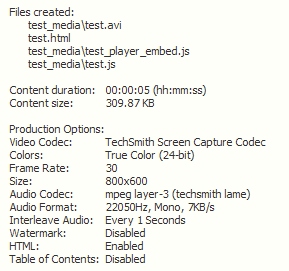
Video entails both intraframe and interframe compression. Interframe compression is like compression of any still image. Intraframe compression begins with selected key frames, and stores the differences between them and subsequent frames.
If there is little motion between key frames, for example in a screencast or a talking head speech, a relatively high degree of compression will be possible without sacrificing quality. Compression will be less efficient if there is a lot of motion -- an unstable, hand held camera, action video, animation, etc. You can cut down on motion by using a tripod, avoiding or shortening pans, zooms and transitions, and using still images.
Video editors typically offer many options for the final output. One may select the container format, codecs to be used, the degree of audio and video compression (measured in bits per second), frame size and frame rate (frames per second), as illustrated here:

Once these parameters are selected, and editing is complete, we render the final version, with compressed audio and video streams, for distribution and viewing. You can see a few comparisons using different parameter settings here.
Also, check out this Camtasia compression tutorial.